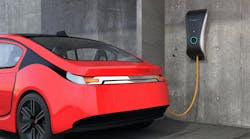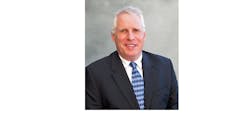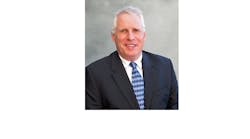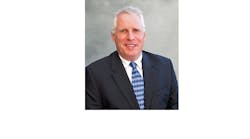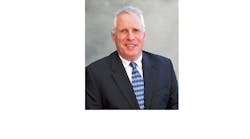To highlight the people, companies and trends making the biggest marks on the future of electrical distributors, Electrical Wholesaling continues its tradition of publishing “The Super Influentials.” Periodically, over the past 15 years, the magazine has published articles with this title to underscore the industry's shakers and movers.
Tom Preston, who was associate publisher of Electrical Wholesaling during the late 1980s to early 1990s, wrote the first in this series in 1989. Those who knew Tom or remember his published work probably recall how he loved to spotlight the bright ideas, companies on the move and giants among us, calling on his 40 years of industry experience to look at the potential industry of tomorrow. This article continues that tradition.
FASTENAL: A DISTRIBUTOR THAT JUST GROWS AND GROWS AND GROWS
When you think of a distributor that loves to build branches, many of us look first at one of the electrical industry's giants, like Graybar, WESCO, GE Supply or Consolidated Electrical Distributors (CED), that operate dozens of branches across the United States and Canada.
But if you added all of their branches together, they still wouldn't match the branch network of Fastenal Co., a publicly held distributor based in Winona, Minn. Fastenal, that sells fasteners and a broad range of MRO, industrial and electrical supplies, has 1,314 locations in 50 states, Canada, Puerto Rico, Singapore, and Mexico. In 2003 alone, Fastenal opened 151 new stores.
The company has some truly humungous growth plans, planning to open 160 to 210 more stores in 2004. It doesn't plan to stop there. In its 2003 annual report, Fastenal says it believes market potential exists in the United States and Canada to grow to 2,200 stores.
Although it's a publicly held company, Fastenal, which last year enjoyed a 9.9 percent sales increase to $994.9 million, prefers to fly under the radar. Many electrical distributors probably don't even realize the company exists. Industrial distributors know all about Fastenal — the company is ranked No. 8 in Industrial Distribution magazine's 2003 Annual List of the largest MRO distributors in North America.
While electrical supplies are only part of its MRO/industrial product offering, the company's warehouses are stocked with an estimated 10,000 stock-keeping units in electrical products. When you figure that electrical emphasis is spread across more than 1,300 locations in five countries, you can see why Fastenal and its 4,900-plus employees are quietly but progressively taking away electrical sales from electrical distributors and will be a force to reckon with in the future. If you want to learn more about Fastenal, check out EW's online archives at www.ewweb.com. We have been covering the company's growth for the past five years.
W.W. GRAINGER: OUT IN FRONT THROUGH THICK AND THIN
Even electrical distributors competing tooth-and-nail with W.W. Grainger Inc., Lake Forest, Ill., must give the company credit for continuing to invest in its operations. In the early 1990s, Grainger had satellite dishes on the roofs of all of it branches and was beaming sales data and other information to and from its Chicagoland headquarters — while many electrical distributors were still arguing whether or not EDI was a good idea.
Grainger was also one of the first distributors to privately brand products. Today, 24 percent of its products bear company trademarked brands, including Dayton motors and Lumapro lighting equipment
The company was the first in the water with the Internet, too, and started selling products online in 1995. Over the last three years, the annual sales volume of orders processed through www.grainger.com dwarfs the total sales of all but the very largest electrical distributors. Grainger's online sales for 2001 to 2003 were $332.5 million, $419.5 million and $478.6 million, respectively. The company's new ad campaign, “Call, Click or Stop By,” reflects the importance it places on online shopping.
Grainger was also one of the first distributors to implement a hub-and-spoke distribution network with regional distribution centers. And, it was also an early innovator in the development of national account contracts for the integrated supply arena.
Grainger got its start in the 1920s selling motors and other industrial supplies from its now ubiquitous red catalog. In those days, the company's catalog was an eight-page publication called the Motor Book. Today, the current catalog, which offers 82,000 products, is in mass production. Approximately 1.5 million copies of that catalog are in print and 555,000 CD-ROM copies are now in circulation.
Grainger recently announced a major operational change with the resignation of Wes Clark as president and chief operating officer and the appointment of James T. Ryan, former executive vice president, as group president of the Grainger-branded businesses in the United States. Ryan will continue the company's present campaign to “super-size” many branches to 20,000-plus square feet or more.
Despite the changes and challenges at Grainger, which had over $4 billion in 2003 sales, operates 575 branches and has 14,701 employees, you can bet on the company always pressing the envelope in search of ever-more-efficient ideas.
THE BATTLE ROYALE BETWEEN HOME DEPOT AND LOWE'S
Electrical distributors have more than a passing interest in the ongoing slugfest in the home improvement market between The Home Depot Inc., Atlanta, and Lowe's, Mooresville, N.C., because of the impact these companies have today as an omnipresent supply option for electricians and other professional customers, and tomorrow as a potential provider of electrical systems installation services.
Home Depot has moved aggressively into installation services by acquiring contracting firms that specialize in flooring, windows and countertops. Last year, its installed-sales business totaled $2.8 billion. It's not too much of a stretch to imagine they one day might acquire electrical contracting firms to provide electrical installations, too. Through its HD Builder Solutions business unit, Home Depot operates design centers and offers design and installation of flooring, countertops and windows. The company started building this business in 2002 by acquiring three of the top 10 turnkey providers of installed flooring in the residential market: Arvada Hardwood Flooring Co., Floors Inc. and Floorworks Inc.
In contrast, Lowe's provides its installed services through third-party contractors. Lowe's hopes its installed business sales hit $2.5 billion by 2005.
Home Depot's role as a competitor could increase even further if it decides to get into the electrical distribution business. That idea isn't as far-fetched as one might think — in 1999 the company purchased one of the largest retail lighting distributors in the United States, Georgia Lighting Supply Co., Atlanta. Through its The Home Depot Supply business unit, the company owns Your Other Warehouse (YOW), a plumbing distributor, that stocks 40,000 products from 100 vendors; Maintenance Warehouse, a wholly owned distributor of maintenance, repair and operations (MRO) supplies; and Apex Supply Co., a distributor of plumbing, HVAC and other related products in the Southeast.
Home Depot covets professional customers because of their spending power; pro contractors represent approximately 30 percent of the company's $64.8 billion in sales. Lowe's tends to focus more on consumer sales, but it still gets 20 percent of its sales from pros. According to the 2003 Home Depot annual report, for every dollar spent by a do-it-yourselfer, a professional customer spends approximately $3. To satisfy these big spenders, five Home Depot stores focus solely on commercial and industrial customers. Home Depot Supply has locations in Phoenix; Milpitas, and Colma, Calif.; Mesquite, Texas; and Highlands Ranch, Colo.
However, Home Depot has its hands full with its top competitor, Lowe's. Over the past three years, Lowe's stock has doubled while Home Depot's stock has declined 12 percent. Lowe's also beat Home Depot in an important retail market measure last year: its average ticket in 2003 was $57.55, beating Home Depot's average ticket of $52.10.
Lowe's, which enjoyed an 18.1 percent 2003 sales increase to $30.8 billion and already had 952 stores in 45 states, is building new stores like crazy. It opened 130 stores in 2003, plans to open 140 stores in 2004, and 150 stores in 2005. The company was traditionally strongest near its North Carolina roots in the Southeast and throughout the Sunbelt, but it's now taking dead aim at all metropolitan markets with more than 500,000 in population, and plans to open 60 stores in the New York metropolitan area in a $1 billion expansion effort.
However, you can't count out Home Depot. It says it sells one out of every five light bulbs, 50 percent of all ceiling fans in the United States, and 40 percent of all consumer power tools in the United States. With at least 1,643 locations, the company operates about 700 more mammoth home centers than does Lowe's. And while Wall Street analysts like the Lowe's 2003 financials more than Home Depot's, with Big Orange we are talking about a company with $64.8 billion in sales, 300,000 employees and 11.3 percent sales growth in 2003 over 2002. Home Depot's legions of shoppers — the company says 22.3 million people shop at its stores each week — will have more stores to check out in 2004. Now the second-largest retailer in the United States next to Wal-Mart, the company plans to open 175 retail outlets in 2004.
LEDS: NOT QUITE READY FOR PRIME TIME (BUT, OH, SO MUCH FUN)
Every once in a while, a new technology cuts through all the hype and hoo-ha and really has the potential to change an industry. That's the case with light-emitting diodes (LEDs). According to an article posted on www.Lightology.com, light-emitting diodes are solid-state semiconductor devices that convert electrical energy directly into visible light. The mainstream press has even taken note of LEDs. The New York Times covers them from time to time, and Business 2.0 magazine tapped them as one of the technological innovations to watch.
The holy grail of LEDs is cost-effectively producing the white light used to illuminate virtually all indoor lighting applications currently lit by fluorescent, incandescent, metal-halide and other lamps. Cost effectively is the operative phrase here.
LEDs have the energy-efficiency part of the equation covered — white-light LEDs last for 50,000 hours. When compared to a lamp life of about 24,000 hours for the most efficient T5 fluorescent lamps, you can see why LEDs turn on lighting designers and architects. For now, enjoy the wild color combinations and light shows that LEDs produce with a virtually unlimited palette of colors. But don't be surprised if you are stocking white-light LEDs sometime soon.
ADAM FEIN AND NAW'S FACING THE FORCES OF CHANGE
Adam Fein, president, Pembroke Consulting, Philadelphia, has carved out a particularly unique niche in the wholesale-distribution industry. Part futurist, part strategic planner and part consultant, Fein is a guy to listen to if you want to get a feel for what's going to happen to the distribution industry in the future — and learn what to do about it. Most consultants research a topic and report back to their customers about the impact they believe it will have on their firms. But oftentimes they speak in the abstract, and fall short in offering a step-by-step action plan that distributors can use to do something about the challenge.
In contrast, Fein takes that all-important next step. He offers real-world advice in nonconsultant speak on how distributors can prepare their companies to harness or overcome the future.
Fein is perhaps best known as author of the 2001 and 2004 editions of Distribution Research Education Foundation's (DREF) “Facing the Forces of Change,” published by the National Association of Wholesaler-Distributors (NAW), Washington, D.C. A senior fellow at the Wharton School of Business' Mack Center for Technological Innovation in Philadelphia, Fein has a doctorate from the Wharton School of Business and a bachelor's degree from Brandeis University. He was also the executive editor of the NAW/DREF's “Outlook 2003” and coauthor of the NAW “Economic Forecast 2004.”
ON THE EDGE WITH BRUCE MERRIFIELD
When you are trying to figure out how this industry is going to change in the future, it's a good idea to collect as many different points of view as possible — conservative, down the middle and on the edge. One guy to check in with is Bruce Merrifield, president, Merrifield Consulting Group Inc., Chapel Hill, N.C. For more than 20 years, Merrifield has entertained audiences and readers with his stream-of-consciousness and at times radical presentations on the state of the wholesale-distribution industry, today and in the future.
Whether it's his take on strategies for spending the most time with your most profitable accounts or the future impact of a more digital economy on the distribution world, his thought-provoking rants will make you examine your assumptions.
To get a taste of his style, subscribe to his free Distribution Channel Commentary by e-mailing [email protected]. Twice-a-month, Merrifield, who earned a bachelor's degree from Princeton and a master's of business administration from the Harvard University Graduate School of Business, covers an amazing array of topics on the distribution industry. You may not always agree with him, but he will always make you think.
NAED EDUCATION FOUNDATION: DISTRIBUTORS PUTTING MONEY WHERE THEIR MOUTHS ARE
Training is one thing everyone talks a good game about, but relatively few invest in. That's not the case with the NAED Education and Research Foundation. Last year, The NAED Foundation changed its focus to include research projects, and this year has been the beneficiary of generous donations from electrical distributors. At press time, at least ten electrical distributors had each donated $100,000 to the NAED Foundation so the National Association of Electrical Distributors (NAED), St. Louis, can help further the professional growth and career development for member companies in the industry.
The companies' donations will become part of an endowment fund for the NAED Education and Research Foundation. The principal amount of the endowment will remain untouched, while the interest will be used to commission future projects and studies.
NAED says over the last decade more than 45,000 individuals have been impacted by the NAED Education and Research Foundation's educational programs. Fueled by donations of this size from members, look for the NAED Education Foundation to have an even bigger role in the future.
THE ENERGY OPPORTUNITY: IT'S TIME TO TURN OUT THE LIGHTS AGAIN
New federal energy standards, the rebirth of utility-rebate programs and voluntary standards for energy-efficient building design will help electrical distributors sell more energy-efficient electrical products. One of the key market drivers will be the upcoming national adoption of the ANSI/ASHRAE/IESNA Standard 90.1 for the design of energy-efficient buildings.
According to www.lighting.com, the national Energy Policy Act of 1994 (EPACT) used ASHRAE-IES 90.1 as a guide to impose standards on local codes. Developed by the American Society of Heating, Refrigerating, and Air Conditioning Engineers and the Illuminating Engineering Society of North America (IESNA), ANSI/ASHRAE/IES Standard 90.1 sets the maximum power density (watts/square foot) that can be permitted by state codes (which can be still more stringent) and also establishes minimum requirements for lighting controls.
Another standard covering energy-efficient building design is the LEED (Leadership in Energy and Environmental Design) Green Building Rating System, a voluntary consensus-based national standard for developing high-performance, sustainable buildings. Members of the U.S. Green Building Council representing all segments of the building industry developed LEED and contribute to its evolution.
Several dozen utility-rebate programs now in effect will also drive the installation of energy-efficient electrical equipment. (See “Rebate Rebirth,” EW — March 2004, p. 16.)
PRODUCT R&D: MAKING LIFE EASIER FOR YOUR CUSTOMERS
As competition tightens, manufacturers, distributors and reps often struggle to differentiate the products they sell. That's why it's more important than ever to find new products that help electrical contractors provide their customers with safe, reliable electrical systems as cost effectively as possible. These products offer electrical marketers an identifiable — and marketable — edge to use in sales efforts. Time is money to contractors, and they need products that save installation time.
That's why the installation of prefabricated electrical systems is growing in popularity. These prefab systems include lighting fixtures with “whips” prewired in junction boxes, prepackaged “kits” of products installed together in a system, and cable assemblies pre-cut to specific lengths or available with connectors.
One electrical contractor, Denier Electric, Ross, Ohio, has a manufacturing subsidiary producing prefabricated electrical wiring systems. The company's Rough-In Ready flexible wiring system offers duplex outlets, switches and kickstands, and other products prewired with receptacles and other labor-saving features.
An intriguing product that recently hit the market with several labor-saving features and some revolutionary new technology is the ModuLight system for T8 fluorescent and compact fluorescent lamps by Juno Lighting Group, Des Plaines, Ill. It converts Class 1 line voltage into Class 3 power limited voltage (National Electrical Code Article 25). This technological advance eliminates conduit, standard wiring, whips and junction boxes. Juno says the system, which utilizes a quick-connect cabling system, reduces installed costs by 25 percent to 45 percent.
VOICE OVER INTERNET
Voice Over Internet Protocol (VoIP) is a relatively new technology that delivers telephone service over high-speed broadband Web access — and could one day offer you major savings in the telephone service costs. The companies offering VoIP are still in the relatively early stages of commercial rollouts of this technology and generally do not offer nationwide coverage just yet. On the plus side, customers with an existing broadband Web connection need not maintain and pay the additional cost for a line just to make telephone calls.
Some of the disadvantages of VoIP at this stage of the game is that some Internet Voice services don't work during power outages and the service provider may not offer backup power, and the difficulty some Internet Voice services have in utilizing 911 emergency services.
